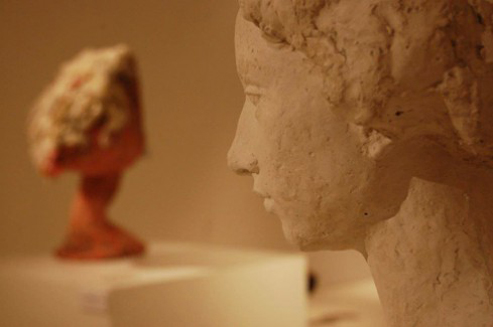On behalf of Emigration Museum we would like to invite you on February 12 to the next edition of the “Beyond the Borders of Art” cycle. It will be focused on an extraordinary artist, whose output was an unceasing attempt at describing human corporeality – Alina Szapocznikow. After experiencing the cruelty of wartime concentration camps, she departed for Paris. Her first sculptures were filled with affirmation of life, however the subsequent fatal disease shaped her awareness to search for a language that could express transformations of the human body. To achieve this goal, she widened the recipients’ horizons by utilizing new materials, as well as applying bold, unsettling forms. The story of her works – full of sensuality, yet at the same time filled with awareness of imminent pain and desire to preserve the impermanent – will be told by Dorota Grubba Ph.D. of the Polish Institute of World Art Studies in Warsaw.
Alina Szapocznikow – distinguished Polish sculptor, born on May 16, 1926 in Kalisz, Poland, died on March 2, 1973 in Praz-Coutant in France. One of the most original contemporary sculptors who managed to establish her own language of form, in order to express transformations her body had to endure because of the long fatal disease that eventually defeated her.
The experiences of her youth – stay in a ghetto and in several Nazi concentration camps, as well as her subsequent battle with the disease – had turned her creative attention towards her own body and its transformations. Her sculptural technique was also a field of many innovations – she constantly experimented with new materials, which helped her create moving works of rare expression.
Immediately after the war, the artist left for Prague and focused on sculpture. She undertook studies at the Academy of Arts, Architecture & Design in Prague and thanks to a scholarship, she could continue her education at the École nationale supérieure des Beaux-Arts in Paris. When the disease forced her to interrupt her studies, she returned to Poland and tried to enter the artistic life by participating in monument contests, among others.
In 1963, she relocated to France, where she focused on her search for wider technical abilities and a better access to unusual sculpting materials she constantly experimented with. Her first significant success came with an award from Copley Foundation which she obtained in 1965 for her sculpture “Goldfinger” referring to one of the films about James Bond. That event also marked her first direct reference to popular culture. She returned to Poland on various occasions, but in 1972 she finally received French citizenship.
Alina Szapocznikow’s works were subject of lively debate already during her life. Because of her innovative search for new ways to express her artistic vision, she was a precursor of many new directions in modern art. Almost the entire sculpture output of the artist is themed around the human body – it is an attempt at recording, remembering, and analyzing its intimacy and sexuality. In 2012, an individual exhibition of more than 100 sculptures and drawings of the artist took place at the Museum of Modern Art (MoMA) in New York. It was entitled “Sculpture Undone, 1955-1972”.
The new series of lectures entitled “Beyond the Borders of Art” are organized by Emigration Museum in Gdynia from October 2013 to May 2014. It is a splendid opportunity to get acquainted with works of the great, yet often unknown, Polish emigrant artists in various genres, be it painting, film, sculpture, or architecture.
More information: Emigration Museum
Photo © Mateusz Michalczyk


